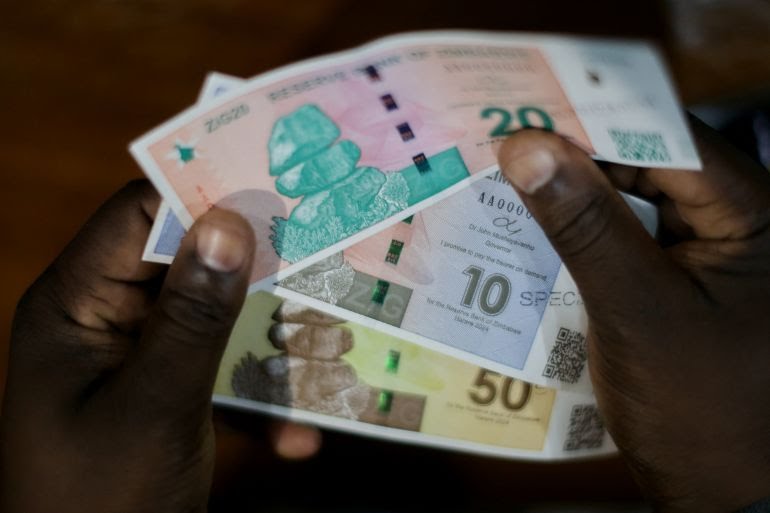The Zimbabwean government introduced earlier this month a new currency, ZiG, backed by gold reserves and foreign currency to address the volatile exchange rates favouring informal traders, as per a Bloomberg news story on Tuesday.
This move aims to stabilise the retail sector, long plagued by currency crises and hyperinflation, prompting businesses to use US dollars while retailers struggle with overvalued official exchange rates.
However, this policy disparity has buoyed informal traders while burdening major retailers like Pick n Pay and OK Zimbabwe. Inflation soared to 55 per cent in March, undermining earnings due to exchange-rate losses. The new currency, ZiG, pegged at 7 US cents, signals a reset, with interest rates slashed from 130 to 20 per cent, promising stability and growth.
Still, concerns persist regarding parallel currency markets and the informal sector’s impact, as a large portion of Zimbabwe’s workforce operates outside formal channels. Informal trade, estimated at $14 billion annually, thrives, posing challenges to formal retailers and impacting foot traffic.
Informal traders, including those selling cross-border goods like second-hand clothes and contraband electronics, undermine formal retail, with Truworths and Edgars Stores Zimbabwe reporting sales declines due to competition from cheaper imports.
One of the informal traders, Brian Tinotenda, told Bloomberg that he pays about $200 monthly for his small selling space, now dealing in toiletries and staples like rice, oil, and cornmeal, all priced in US dollars since he started his own business in 2021, a stark contrast to his previous job at Spar Group Ltd.
Despite hopes that ZiG will level the playing field, challenges remain in breaking away from the US dollar dominance, particularly as some major manufacturers now favour informal markets. Reviews of ZiG’s effectiveness and impact are slated for June, signaling cautious optimism amid a complex economic landscape.


